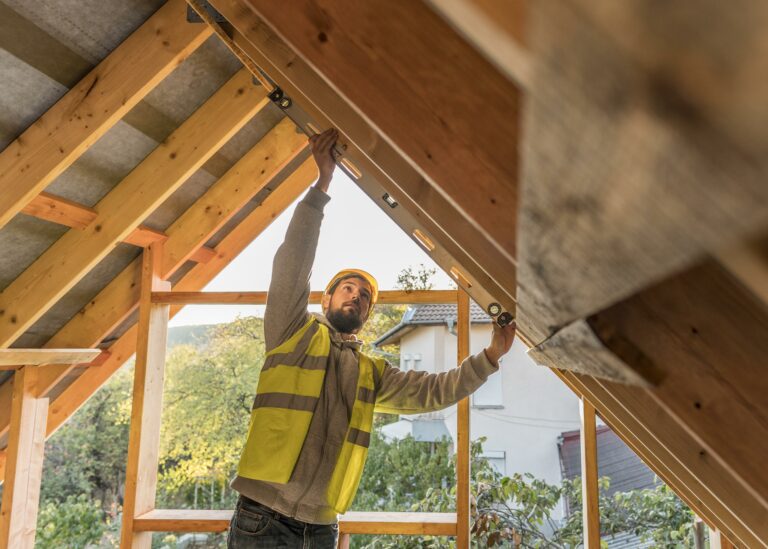Introduction
If you’re thinking about re-roofing your home or embarking on a construction project, chances are you’ve thought about the materials you’d like to use. And if you’re a fan of natural, timeless, and classic materials, then wood shingles could be just what you’re looking for. With a multitude of styles, finishes, and types of wood shingles to choose from, understanding the options at your disposal can feel a bit overwhelming. But fret not, we’re here to dive into the nitty-gritty of the world of wood shingles, exploring their various types and how they can elevate the look and feel of your home or project.
Types of Wood Shingles
Cedar Shingles
Cedar, a popular choice among homeowners and builders alike, has a stunning aesthetic appeal that enhances the natural beauty of any construction project. Cedar shingles offer durability and resistance to weather elements, thanks to their natural oils. Furthermore, cedar provides excellent insulation and can significantly reduce energy bills.
Pine Shingles
Pine shingles are another type that homeowners often prefer due to their rustic, attractive appearance. Usually treated with a pressure process to resist decay, these shingles are reliable, sturdy, and provide a distinct aesthetic appeal. However, they require frequent maintenance to retain their appearance and integrity.
Redwood Shingles
Renowned for their rich, vibrant hue, redwood shingles provide an elegant and high-end finish to any building. Their resistance to warping and shrinking, coupled with their longevity, makes them a premium choice. The redwood’s innate resistance to insect damage and decay is a notable selling point.
Spruce Shingles
Spruce shingles, a less common type, offer a unique aesthetic appeal with their light color and grain pattern. While they may not be as durable as other wood types, they are still a viable choice for those seeking a different look. Regular maintenance is a must to prevent potential issues such as rotting and warping.
Composite Wood Shingles
For those looking for an eco-friendly alternative, composite wood shingles might just hit the spot. These shingles are made from recycled materials, replicating the look of natural wood shingles without the drawbacks of maintenance and susceptibility to elements.
Styles of Wood Shingles
Hand-Split Shingles
Hand-split shingles are known for their rustic, traditional look, perfect for those aiming for a vintage aesthetic. Their irregular, rough-hewn surfaces contribute to their charm, making each piece unique.
Taper-Sawn Shingles
With a smooth texture on both sides, taper-sawn shingles are cut to precise dimensions. Their uniform appearance makes them an ideal choice for more modern and contemporary architectural styles.
Scalloped Shingles
As the name suggests, scalloped shingles have a decorative, curved edge that adds an artistic touch to any roof. They’re an ideal choice for anyone wanting to add some character to their building’s exterior.
Maintenance and Care of Wood Shingles
Proper maintenance and care are essential for wood shingles, regardless of their type. Regular cleaning, treating with preservatives, and periodic inspections for damage will go a long way in extending their lifespan and keeping them in tip-top shape. It’s also advisable to consider factors such as local weather conditions and exposure to sunlight when choosing the type of wood shingles for your project.
Installation of Wood Shingles
Installing wood shingles requires skill and understanding of the material. Each shingle must be carefully nailed down, usually with stainless steel nails to prevent rusting. The rows of shingles need to be evenly spaced, and care should be taken to overlap shingles to prevent water seepage.
The Environmental Impact of Wood Shingles
One of the major advantages of wood shingles is their environmental friendliness. Being a natural product, they are biodegradable and have less impact on the environment compared to synthetic materials. When sourced responsibly, wood shingles can be a sustainable choice for roofing.
The Cost Factor of Wood Shingles
The cost of wood shingles varies significantly depending on the type of wood, style, and installation costs. While they can be more expensive upfront compared to other materials, the longevity, aesthetic appeal, and insulation benefits they offer can make them a worthy investment.
Conclusion
The choice of wood shingles can dramatically impact the aesthetic appeal, durability, and overall character of your building project. With an understanding of the various types of wood shingles and their distinctive features, you’re now better equipped to make an informed choice that aligns with your needs and design aspirations. Remember, choosing the right type of shingle is an investment in your home’s future, so choose wisely!

The main types of wood shingles are cedar, pine, redwood, spruce, and composite wood shingles.
Yes, wood shingles are environmentally friendly. They are a natural product and are biodegradable. If sourced responsibly, they can be a sustainable choice for roofing.
Yes, wood shingles can be painted or stained. This can help protect them from the elements and prolong their lifespan. However, the natural beauty of wood is often preferred, and many choose to let it age naturally.
Wood shingles offer many benefits, including aesthetic appeal, durability, and excellent insulation. They can also add value to a home due to their timeless, classic appearance.
Wood shingles require regular maintenance, including cleaning, treating with preservatives, and periodic inspections for damage.
